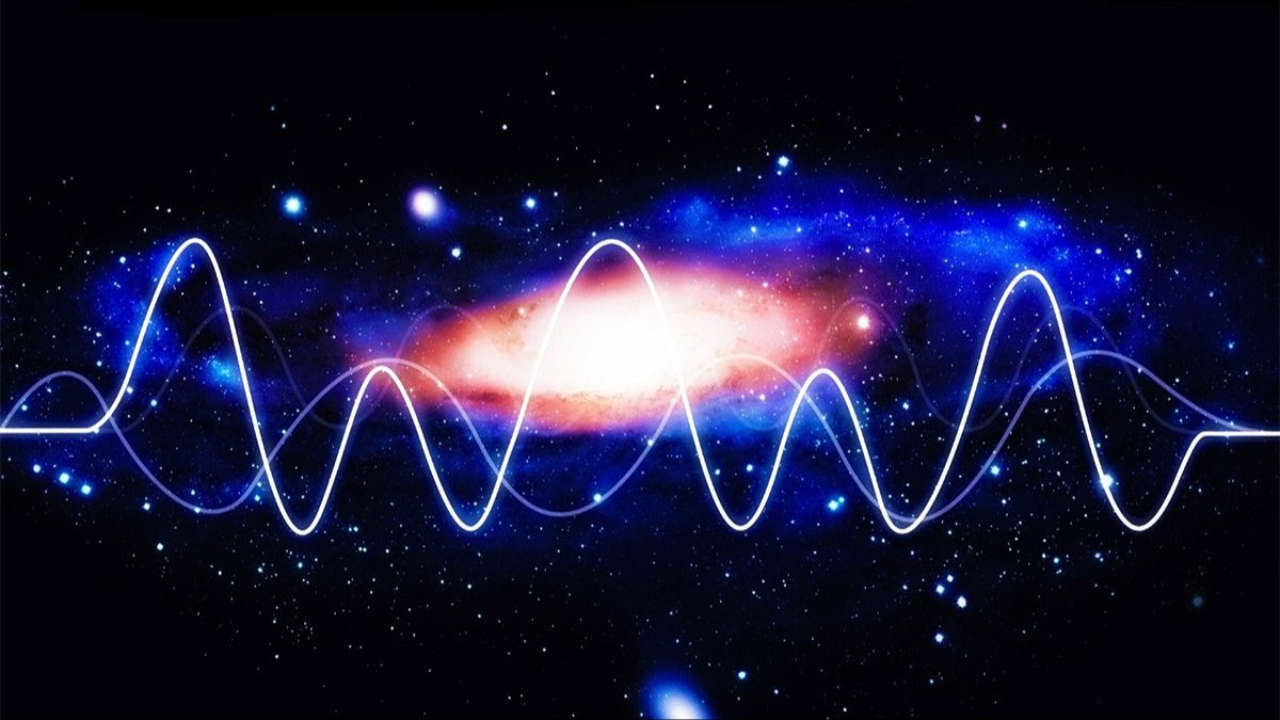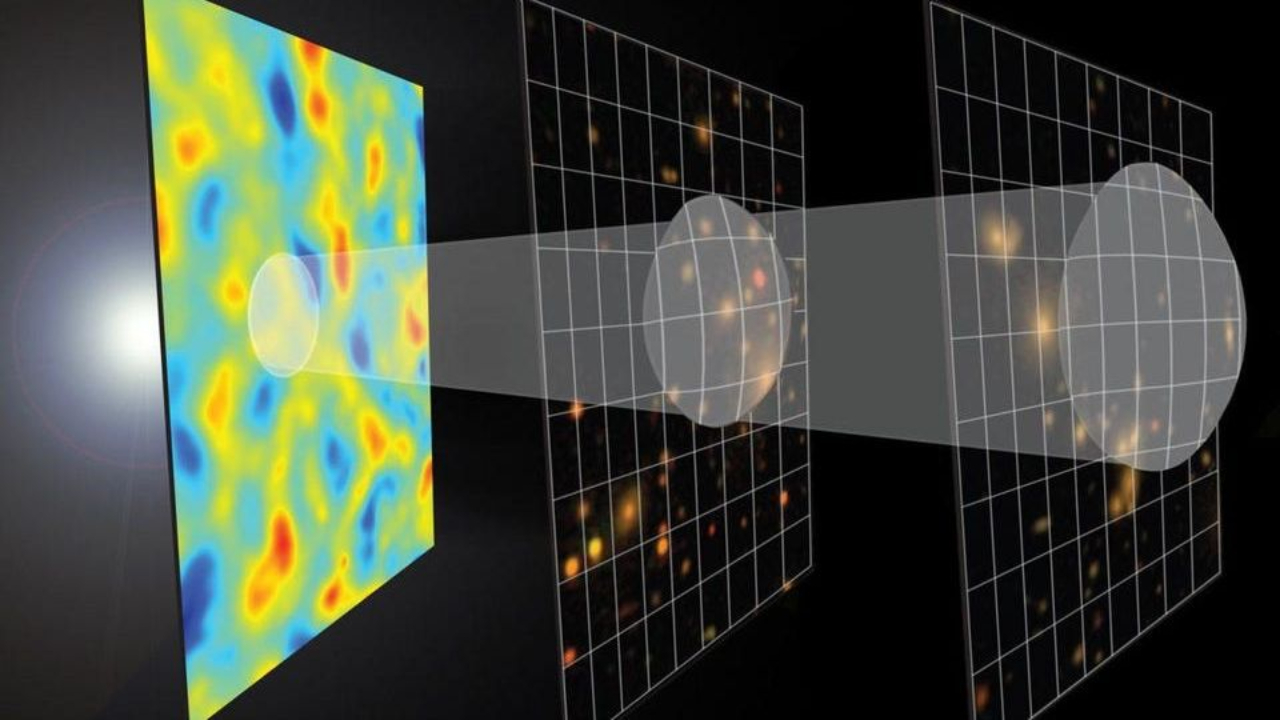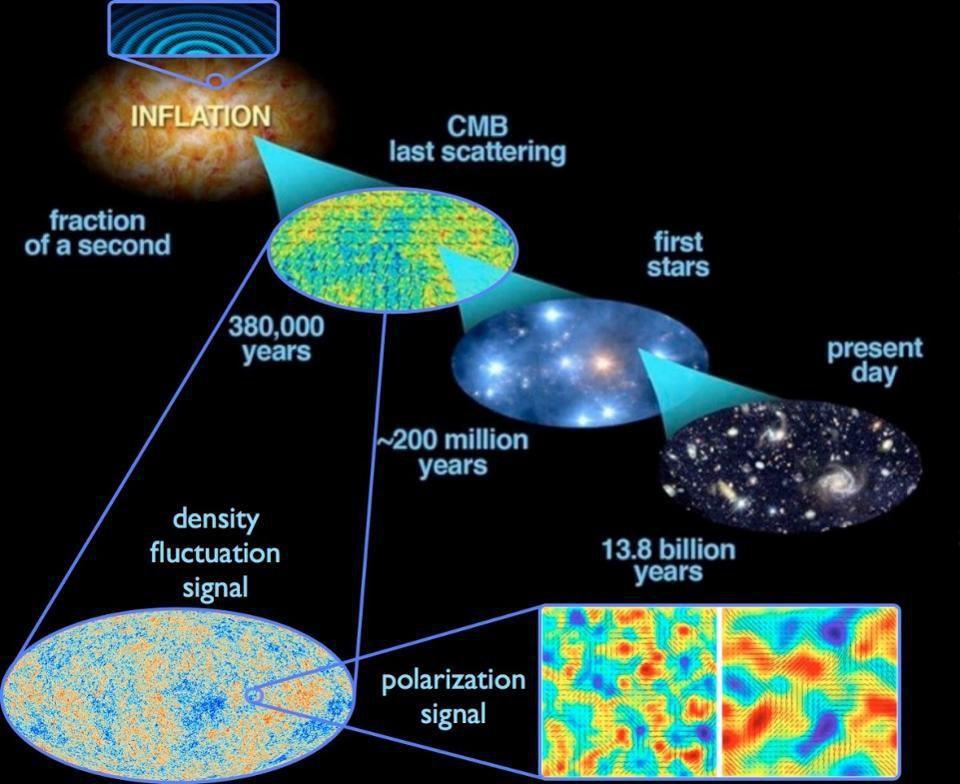Science News
& Faculty Articles
El Gordo: The Galaxy Cluster that Defies Standard Cosmology

Image credit: ESA/Hubble & NASA, RELICS
By Amal Pushp, Affiliate Physicist at the Resonance Science Foundation
A galaxy cluster is a gravitationally bound system consisting of hundreds or even thousands of galaxies along with plasma and dark mass. Galaxy clusters serve as a crucial component when it comes to understanding the structure and evolution of our universe. Some of the notable clusters in the adjacent universe include the Virgo cluster, the Hercules cluster, and the Coma cluster. A commonality between all the known galaxy clusters is the fact that they are all governed by the laws of standard cosmology otherwise dubbed as the Lambda-cold dark matter model (ΛCDM).
A recent study published in the Astrophysical Journal suggests a departure from the standard cosmological model [1]. One of the key facets of the ΛCDM model tells us that before becoming phenomenal galaxy clusters, there is primarily the formation of individual galaxies. In other words, when we...
Is JWST Confirming Haramein’s Holographic Solution Predicting that the Universe is a Black Hole?

Recent observations of the JWST challenge the Big Bang origin of our universe, in support of Haramein's Holographic framework where the Universe was created by a black hole embedded in a larger universe. Most of our mainstream astronomy and astrophysics may have to be rewritten!
By Dr. Inés Urdaneta, Physicist at Resonance Science Foundation
In our RSF series concerning the Vacuum Catastrophe problem -the 122 order of magnitude discrepancy between the vacuum energy density at cosmological scale and quantum scale- and the solution provided by the generalized holographic approach [1], we remarked that this solution to the vacuum catastrophe hinted into a very intriguing scenario … that our Universe fulfills the condition of a Black hole once you correctly calculate the contribution of the vacuum fluctuations that dark mass and dark energy account for.
This theoretical prediction might now-a-days be validated with the current observations of the James Webb Space...
Physicists Link a New Quantum Property with the Emergence of Spacetime

By Amal Pushp, Affiliate Physicist at the Resonance Science Foundation
The origin of spacetime is one of the most intriguing questions of the fundamentals of physics. This is one of the many questions that has essentially troubled scientists for centuries. Modern-day theorists have come up with several frameworks that have tried to approximate the main conditions that led to the emergence of spacetime. Some of these theories are emergent gravity, causal set theory, information theory, and multiple models within the enterprise of quantum gravity.
Physicists have been pondering for long that space and time are essentially derived properties from something more concrete, however, it is still not very clear as to what that more fundamental thing might be. There are several pieces of evidence in the scientific literature that apparently hint towards the non-fundamentality of spacetime. Essentially with the gauge-gravity duality proposal, theories of spacetime emergence...
Modified Theories of Gravity may be Replacing Dark Matter Sooner Than Expected!

For more than a decade the astrophysical community has been gathering observational evidence that seem to contradict the concept of dark matter in favor of new theories of gravity. In this article we summarize the most important ones, from to 2016 to present.
By Dr. Inés Urdaneta, Physicist at Resonance Science Foundation
As we have explained in former articles, dark matter was inferred as an additional gravitational source that could explain the flattened rotation curves of spiral galaxies; spiral galaxies were found to rotate at a nearly constant rate, independently of its radius. From Newton’s law and the distribution of visible matter, one would expect the rotational velocity of stars and gas inside a galaxy to decrease with distance, but in the 70’s astronomers found this flattened anomaly, and dark matter was born.
Nevertheless, many teams have found astronomical evidence pointing towards modified gravity models instead. For instance, in 2016, a significant...
Cosmic Inflation: Boon or Bane?

Credit: Zosia Rostomian
By Amal Pushp, Affiliate Physicist at the Resonance Science Foundation
Cosmic inflation is a theory governing the dynamics of the early universe, moments after the grand cosmic event called the Big Bang. MIT physicist Alan Guth was the first one to propose the inflationary theory in the early 1980s however, it was later advanced by other influential physicists like Andrei Linde and Paul Steinhardt [1-3]. The theory mainly deals with the exponential expansion of space and subsequently the large-scale structure formation in the universe during its evolutionary stages. It is also suggested by the theory that the epoch of inflation lasted from 10−36 seconds to sometime between 10−33 and 10−32 seconds after the Big Bang. But in order to articulate the events following the Big Bang admirably, one needs to have a full-fledged quantum theory of gravity, which is yet a substantial challenge for physicists.
So far,...
Eridanus Supervoid May Explain Cosmic Microwave Background Anomalous Cold Spot

By: William Brown, Biophysicist at the Resonance Science Foundation
A lot of information about the large-scale nature of the universe can be derived from detailed analysis of its ubiquitous thermal electromagnetic field, called the cosmic microwave background (CMB), for instance analysis of suppressed fluctuations at large wavelengths reveals a closed geometry of the universe— a torus-type geometry as we described in the RSF article A New Signature of a Multiply Connected Universe [1].

Inhomogeneities attributed to quantum fluctuations during the inflationary period are amplified across large-scale universal structure, and when inflation ends, they become density fluctuations and cause the differences in temperature observed in the CMB. Its an intriguing signal to study because it reveals an epoch when atomistic and cosmological structure where one-and-the same, and quantum behaviors that typify nature evolves into large-scale structural features of the universe. (Credit...
A New Signature of a Multiply Connected Universe

By: William Brown, Biophysicist at the Resonance Science Foundation
Scientists have measured an upper-bound to the size of the Universe using the Cosmic Microwave Background (CMB) temperature gradient field [1]. The results show that the universe is most likely multiply connected, which means that it is finite, and the topology is such that it closes back in on itself—such that on the largest scale the universe has the geometry of a torus (and has a global positive curvature). This is contrary to the conventional cosmological models of the universe that model it as spatially infinite and topologically flat—assumed parameters that the researchers of the latest study demonstrate do not match the CMB temperature gradient data.

If the universe were spatially infinite and topologically flat, then the temperature fluctuations seen in the CMB would occur across all size scales—however this is not what is observed in the data. If, instead, the universe has a finite size...



